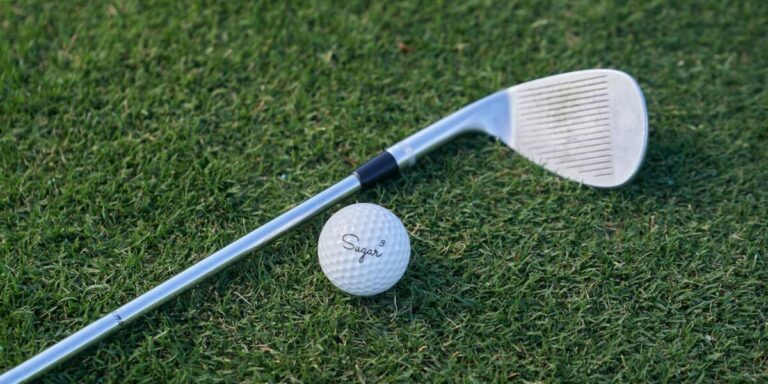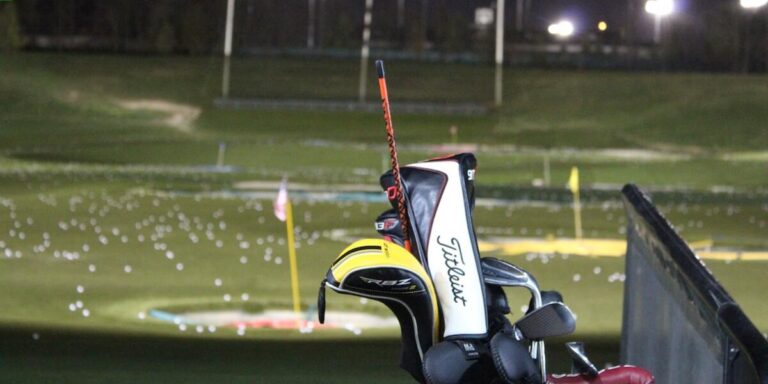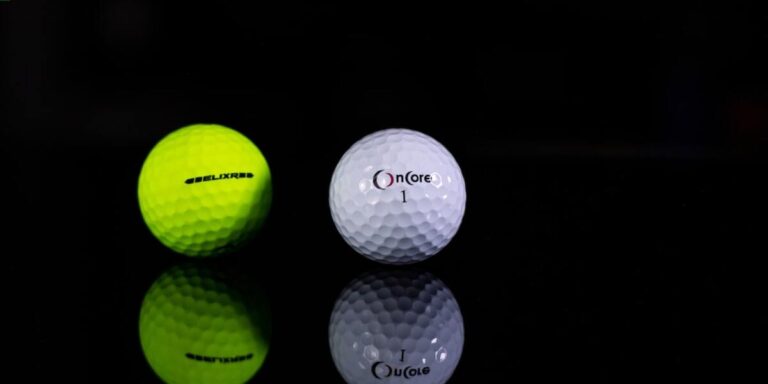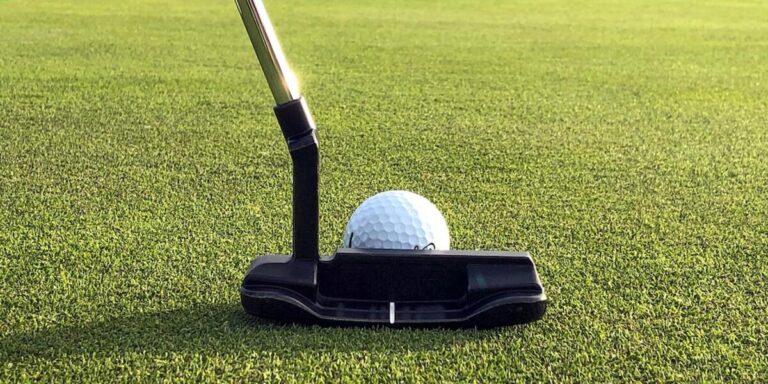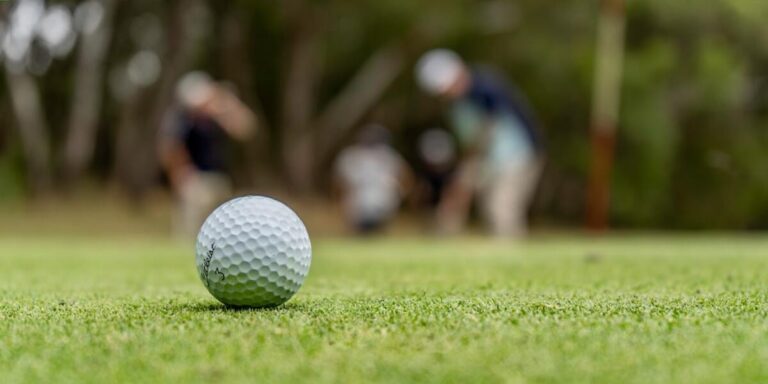Can you switch golf balls during a hole?
“Can you switch golf balls during a hole?” is a question that many new golfers ask. The answer is yes, but there are some restrictions. For example, you can’t switch between colored golf balls. If you’re playing with a white ball and find a yellow ball in the rough, you must finish the hole with the yellow ball.
When is it okay to switch golf balls during a hole?
There are a few instances when it is perfectly acceptable to switch golf balls during a hole. If your ball has sustained some sort of damage, such as a large crack or chip, then it is definitely time to switch out for a new one. Additionally, if your ball is simply not performing the way you want it to – perhaps it isn’t flying as far as you’d like or keeps veering off to the left – then feel free to experiment with different types or brands of golf balls until you find one that better suits your game.
Of course, there are also situations where switching golf balls mid-hole just wouldn’t make sense. For example, if you’re playing on a particularly long and difficult hole, chances are good that everyone in your group will be using up quite a few golf balls by the time they finally reach the green. In this case, it would probably be best to just stick with the same ball throughout the entire hole so that no one gets too far behind (or runs out of Golf Balls entirely!).
Why do some golfers prefer to switch golf balls during a hole?
Golfers have long debated the merits of using different golf balls on the course. Some golfers feel that it gives them an advantage to switch balls during a hole, while others believe that sticking with one ball throughout the round is best. So, what’s the truth? Let’s take a closer look at the benefits and drawbacks of each approach.
Switching golf balls during a hole can be beneficial for several reasons. First, it allows golfers to tailor their shots according to the type of ball they are using. For example, if a golfer is looking for more distance on their drive, they may choose to use a harder ball that will travel further when hit. Conversely, if accuracy is more important than distance, they may opt for a softer ball that will stop more quickly once it hits the ground. Second, switching balls can also help prevent wear and tear on any one particular ball. This is especially important if a golfer is playing on a particularly rugged course where theirballs are likely to sustain damage from hitting rocks or tree roots. By alternating between two or three different balls duringa round, golfers can help extend the life of their equipment and avoid having to replace expensive balls prematurely
While there are some clear advantages to switching golfballs during a hole , there are also some drawbacks worth considering . One potential downsideis that constantly changing equipment can disrupta golfer’s flow or rhythm . It takes time t o adjustto new clubs or shoes ,and similarly ,itcan take awhilefor awrapped upin thenowballsto getusedtothefeelofdifferentgolf bal lsIf agolfer spends too muchtime experimentingwith various typesof coloredgolfbal lsduringtheirround ,
How often should you switch golf balls during a round of golf?
Golf balls are an important part of the game and can impact your performance. It is important to choose the right golf ball for your skill level and playing conditions. The average golfer should switch golf balls every 3-5 holes. However, if you are playing in different conditions or on a different course, you may need to adjust how often you switch golf balls.
If you are playing in hot weather, it is a good idea to switch golf balls more frequently. This will help keep your ball from getting too dirty and affecting your shot accuracy. If you are playing on a course with lots of water hazards, you may want to consider switching out your golf balls after each hole. This way, if you lose one in the water, you won’t have to search for it as long!
No matter what conditions you’re playing in or how often youswitch out your golf balls, it’s always important to clean them properly beforeand after each round of play!
What are the benefits of switching golf balls during a hole?
Switching golf balls during a hole can be beneficial for a number of reasons. Firstly, it can help to improve your game by giving you access to different types of golf balls. For example, if you are struggling with accuracy, then switching to a ball that is more forgiving may help you to score better. Alternatively, if you are finding that your drives are not going as far as you would like them to, then using a harder ball may give you the extra distance that you need. Secondly, switching golf balls can also be helpful from a strategic standpoint. If there are certain areas of the course where you tend to struggle (e.g., doglegs), then having different types of golf balls at your disposal can allow you to tailor your approach in order to maximize your chances of success. Finally, switchin
Are there any disadvantages to switching golf balls during a hole?
Though you may be itching to try out that new box of colorful golf balls you just bought, it’s generally not a good idea to switch golf balls during a hole. Here are a few reasons why:
For one, it can be confusing keeping track of which ball is yours if there are multiple colors in play. This is especially true if you’re playing with a group of people and everyone has different-colored golf balls. It can also lead to arguments and disagreements over who hit what ball.
Another reason is that different types of golf balls perform differently. If you’re used to hitting one type of ball and then switch to another, chances are your game will suffer as you adjust to the new feel and performance of the second ball. In other words, stick with one type or brand of golf ball throughout your round for the best results.
What factors should you consider before switching your golf ball mid-hole?
There are a few factors you should consider before making the switch to colored golf balls. The first is whether or not the color will actually help you see the ball better. If you have trouble finding your white golf balls in the rough, then switching to a brightly colored ball may help improve your game. However, if you’re able to find your white golf balls just fine, there’s no need to switch.
Another factor to consider is price. Colored golf balls can be more expensive than traditional white ones, so if cost is a concern, stick with whiteballs. Finally, think about what kind of message you want to send on the course. Swishing around with pink or neon yellow golf balls might turn some heads and draw attention from other players – which could either be good or bad depending on how confident you are in your abilities!
Frequently Asked Question
-
Why are most golf balls white?
-
What is a poor golf shot called?
-
What is the most visible golf ball color?
-
Why are red golf balls hard?
-
Do any pro golfers play with colored balls?
-
How far does the average 65 year old drive a golf ball?
-
What is the purpose of colored golf balls?
-
Can you switch golf balls during a hole?
-
Why are golf balls always white?
-
Does Titleist make colored balls?
-
What golf balls are the easiest to see?
-
Why does Bubba Watson use pink?
-
Do Pro V1 come in colors?
-
Do colored golf balls go as far?
-
Are red golf balls easy to find?
This bright, vibrant color was an excellent alternative to natural brown feathery balls. White was the most common color for hundreds of centuries, even though there were high-intensity neons and yellows.
The shank is a shot that strikes the club hosel and travels straight (for right-handed players). A shank is often considered to be the most dangerous shot on golf, even more so than a whiff.
Yellow golf balls can be seen much more easily than other colors. The fluorescent yellow or neon hues found on many golf balls (including the Srixon Q-Star Tour and Q-Star Tour) make this even easier to see.
It is a red ball that can be seen from 50 yards. Our eyes combine the red color with the green of the grass to create a darker pixel, or tiny shadow, making it difficult for us to locate the ball.
Pros don’t generally use colored golf balls. White balls are more easily seen. Pros depend on golf for their livelihood so it is important that they maximize their ability to view the ball’s flight and determine where the ball will go. Major champions like Hale Irwin and Bubba Watson have both used colored golf balls.
Your swing speed decreases as you age. However, older golfers still have incredible swing speeds. You’re considered average if you can drive your ball to a distance of around 220 yards. Anything less than 210 yards is considered below average.
You can find high-visibility balls in many colors, including red, yellow, orange and pink. They are designed to keep you on track no matter where the ball lands, whether it is in the fairway or the rough.
A new ball can be used to start a hole. If you need relief (free or penalty), you can substitute any ball. The substitute ball can be of any brand, unless the Local Rule applies.
This bright, vibrant color was an excellent alternative to natural brown feathery balls. White was the most common color for hundreds of centuries, even though there were high-intensity neons and yellows.
You have six options when it comes to Titleist golf balls models. You have six color options.
Yellow golf balls have the best statistical visibility. There are many colors, each with their advantages and drawbacks. Orange balls, for example, are great and easy to see when they’re used in the winter and summer months.
You might be wondering why he uses pink golf balls. It’s an extension of his pink driver that he used when he was first on tour. He thought it would give him the ultimate bragging right to be able drive the ball faster than his competition with a pink driver.
We are thrilled to announce the availability of Pro V1 and Pro V1x golf balls, which are the most durable and high-quality golf balls available, in High Optic Yellow. This is in response to growing interest from Team Titleist members and other golfers worldwide.
It is easier to spot yellow balls in the air (especially if you are blind) and to locate them once they have hit the ground. Different colors can help you distinguish which ball belongs to you. Brighter balls might appear larger and more difficult to hit the ground.
The visibility of red balls is reduced at night, and in artificial lighting. Bunkers are good places to find orange balls. Green balls can clash with grass colours. It is important to know what your goals are and then think carefully before you settle on a ball color.
Conclusion
If you’re looking for a new golf ball, don’t just go with the first one you find online. Do your research and make sure you’re getting a quality product from a trusted source. And if you’re ever unsure about whether or not you can switch golf balls during a hole, just ask an experienced golfer – they’ll be happy to help!



